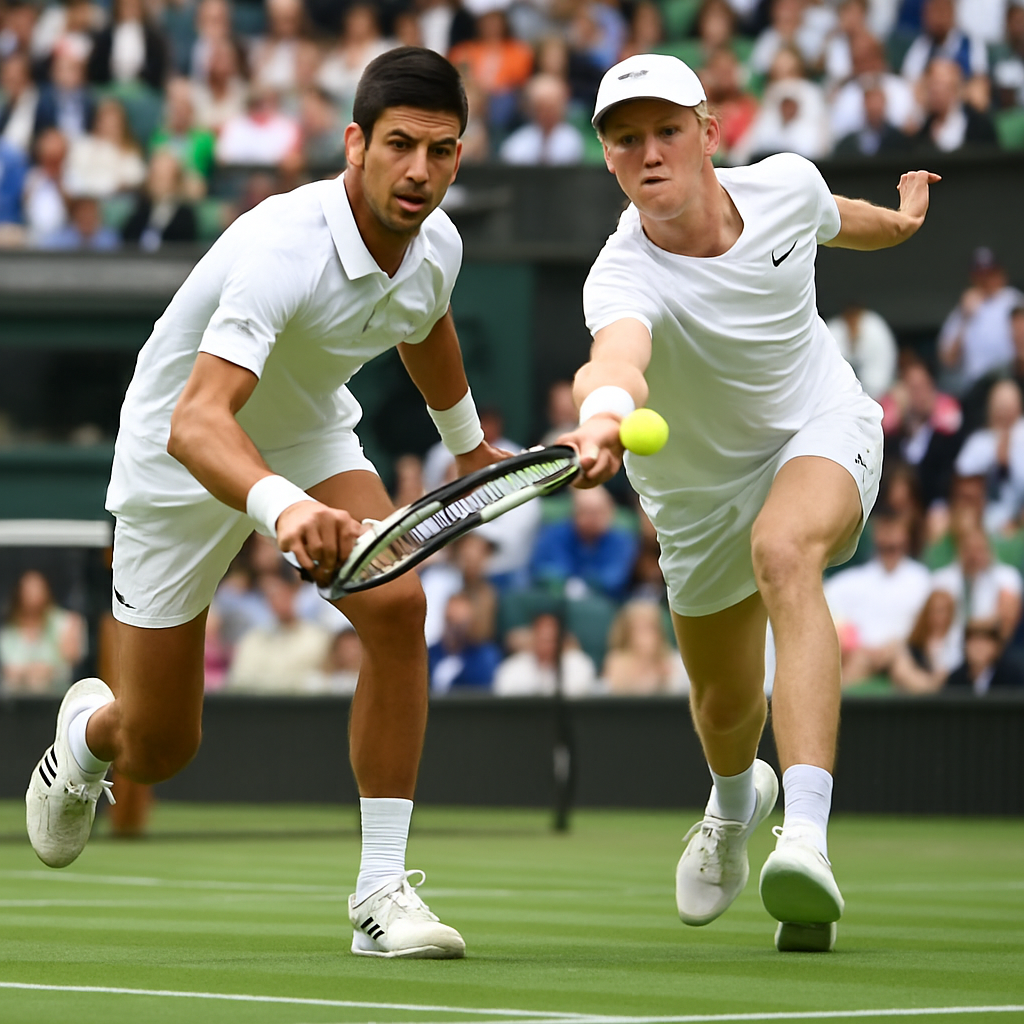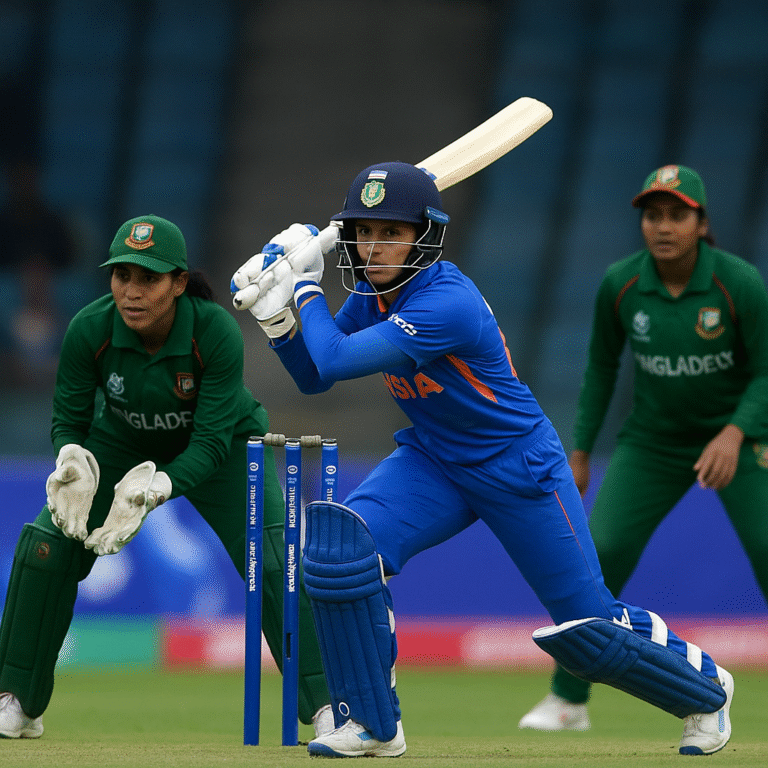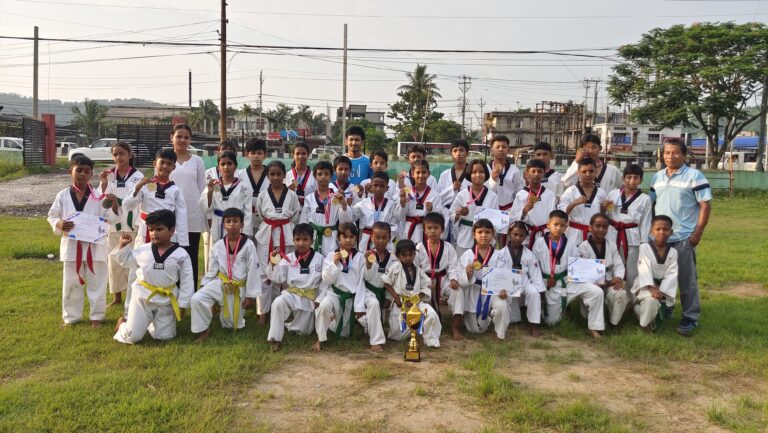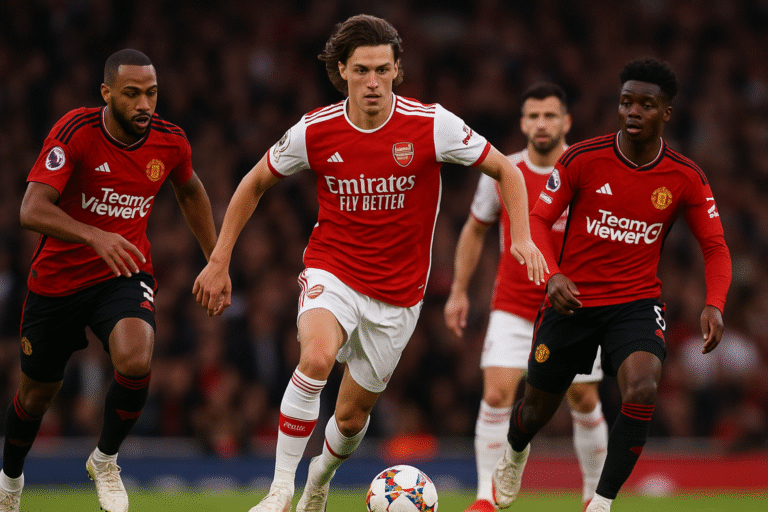
Wimbledon, July 11, 2025 – In a match that symbolized the generational shift in men’s tennis, Jannik Sinner, the current World No. 1, delivered a commanding straight-sets victory over seven-time champion Novak Djokovic in the semi-final of Wimbledon 2025. The Italian dispatched the veteran Serbian with a clinical 6–3, 6–3, 6–4 performance to reach his first final at the All England Club, setting up a highly anticipated clash against two-time defending champion Carlos Alcaraz.
The victory not only confirmed Sinner’s status as a Grand Slam favorite but also signaled a potential changing of the guard in men’s tennis, as Djokovic, now 38, appeared physically outmatched and increasingly unable to keep up with the new generation’s speed and power.
I. Match Preview: Clash of Eras
The Wimbledon 2025 men’s semi-final was billed as a generational duel: the old guard versus the new order. Djokovic, with 24 Grand Slam titles and an illustrious Wimbledon legacy, had overcome numerous injuries and defied age to reach yet another semi-final. His movement, however, had been visibly hindered in earlier rounds following a fall in the quarter-finals.
Jannik Sinner, 23, came in as the top seed and the hottest player on tour. After his triumph at the Australian Open earlier in the year and a runner-up finish at Roland Garros, the Italian had showcased versatility across all surfaces. Entering this match, he had won four consecutive matches against Djokovic and carried a tactical advantage along with greater physical freshness.
The Centre Court crowd, always reverent to its champions, were curious: could the young Italian topple a legend at the Temple of Grass?
II. First Set: Sinner Makes His Intentions Clear
Right from the first ball, Sinner showcased authority. His first serve was dialed in at over 200 km/h, and his forehands exploded off the grass. Djokovic, who traditionally absorbs pace and redirects it with surgical precision, found himself pushed behind the baseline.
The first break came early. At 2–1, Djokovic double-faulted twice and mistimed a backhand, handing the break to Sinner. The Italian consolidated with a love hold. Every time Djokovic tried to step in, Sinner countered with deep groundstrokes that kept the Serb guessing. The set was over in just over 30 minutes—6–3 to Sinner.
III. Second Set: Pressure Mounts on Djokovic
The second set began with signs of frustration from Djokovic. His footwork was labored, his backhand lacked its usual bite, and the serve—typically his lifeline—was producing short returns for Sinner to punish.
At 2–2, Sinner capitalized on Djokovic’s visibly declining movement, breaking him again after a 14-shot rally that saw the Serb fall flat and stay down for several seconds. Though Djokovic would continue, his timing and balance were clearly off.
Sinner’s calm composure, meanwhile, was remarkable. He executed drop shots, inside-out forehands, and even serve-and-volley plays with the flair of a seasoned Wimbledon champion. He closed out the second set 6–3 with a stunning crosscourt return winner that left Djokovic stranded at the net.
IV. Third Set: A Flicker of Resistance
Despite being down two sets, Djokovic summoned the resilience that has defined his legendary career. After receiving a medical timeout for a recurring leg issue, he broke Sinner’s serve for the first time in the match and took a surprising 3–0 lead.
Centre Court erupted, sensing one of Djokovic’s signature comebacks.
But Sinner was not rattled. He broke back immediately, reasserting control with surgical returning and relentless baseline aggression. As Djokovic’s legs began to fail him once more, the Italian kept attacking the backhand wing, forcing errors. Sinner won six of the next seven games.
On match point, Djokovic sent a routine forehand into the net. Sinner dropped his racquet, raised his arms, and let the applause wash over him. Victory was his—6–3, 6–3, 6–4 in 2 hours and 10 minutes.
V. Tactical Superiority
The match wasn’t just about power—it was about precision, planning, and poise.
-
Sinner’s Serve: He won over 85% of points on his first serve. Djokovic, widely considered one of the greatest returners in history, failed to create any real pressure until the third set.
-
Depth and Pace: Sinner hit an astonishing number of balls within one meter of the baseline. This constant depth prevented Djokovic from stepping inside the court and dictating rallies.
-
Physical Fitness: Sinner looked fresher, quicker, and sharper. His court coverage, especially to the forehand side, was flawless.
-
Return Game: Sinner read Djokovic’s serve with ease, frequently taking it early and pushing the Serb off balance with deep, flat returns.
- Also Check : Scotland vs Jersey: A Final-Ball Thriller Ends World Cup Dreams
VI. Djokovic’s Body Battles
For Djokovic, the story of the match wasn’t just about being outplayed—it was also about physical limitations. The aftermath of his slip in the quarter-finals was evident, as he moved with difficulty and often winced after long rallies.
After the match, Djokovic admitted his left leg had not recovered fully. While he refused to use it as an excuse, he acknowledged that his mobility was significantly hampered.
At 38, and having undergone multiple surgeries over the past two years, questions are again being raised about how much longer Djokovic can compete at the elite level. However, he was firm in his commitment to return:
“This is not my last Wimbledon. I’m planning to come back at least one more time. Hopefully in better shape than I was today.”
VII. Sinner’s Rise: Not Just a Phase
Sinner’s journey from a promising teen to the current World No. 1 has been defined by consistency, work ethic, and quiet confidence. His partnership with coach Darren Cahill has added tactical nuance and improved shot selection, while his physical transformation has enabled him to dominate longer matches.
With this win, Sinner not only reached his first Wimbledon final, but also became the first Italian man to do so. He’s now contested Grand Slam finals on all three surfaces in the same year—hard, clay, and grass—a remarkable feat.
VIII. Alcaraz Awaits: The Final Tennis Deserves
Sunday’s final will be a rematch of the 2025 French Open final, where Alcaraz edged Sinner in five gripping sets. Their rivalry is being hailed as the new Federer-Nadal, combining power, finesse, and extraordinary athleticism.
Both players are 23. Both have won Grand Slams. Both play explosive tennis with modern variations. And now they meet on tennis’ most sacred court to battle for the crown.
Their head-to-head is tightly contested, with Sinner slightly ahead in total wins, though Alcaraz owns two wins at Wimbledon. Their contrasting styles—Alcaraz’s flair and net skills vs Sinner’s clean aggression and discipline—promise fireworks.
IX. Legacy Questions and Looking Forward
Djokovic’s Future
Though Djokovic has vowed to return, 2025 may mark the beginning of his twilight years at the top. He is still a dangerous player—able to beat most of the field—but deep Slam runs are becoming more physically taxing.
Sinner’s Supremacy
Regardless of Sunday’s result, Sinner’s consistency in 2025 has been exceptional. His mental strength, technical polish, and improving grass-court acumen make him a formidable No. 1.
The Era of Alcaraz and Sinner
This year’s Grand Slam calendar has been defined by two men—Alcaraz and Sinner. With each of them contesting multiple finals, and others like Holger Rune and Ben Shelton lurking behind, the new era of men’s tennis is well underway.
X. Conclusion
Jannik Sinner’s triumph over Novak Djokovic at Wimbledon 2025 will be remembered not only as a masterclass in grass-court tennis but also as a symbolic moment—the day a new king of the court announced his reign.
Djokovic, wounded but not bowed, may yet have a few more moments of greatness. But as the curtain begins to fall on his glittering era, the rise of Sinner (and the looming shadow of Alcaraz) signals a thrilling future for tennis.
With the final showdown approaching, all eyes will be on Centre Court this Sunday—not just for a title, but to witness the unfolding legacy of a sport in evolution.



